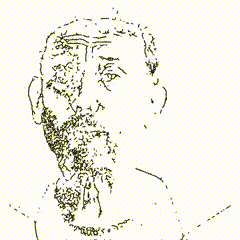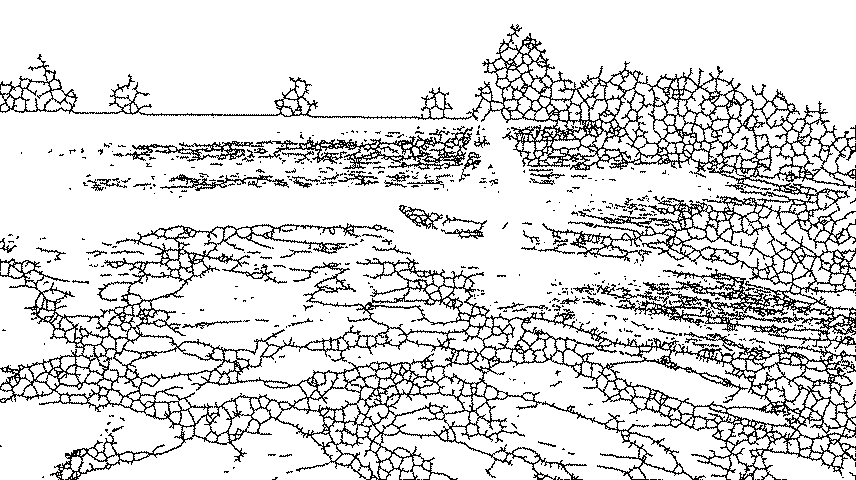Skeleton Physarum
2022
Error-Based Generative System
This research started in 2020 by accidently using skeletonization to save time for my coursework. At first glance, it appears to be a pattern of a standard slime mold network. But in reality, it has nothing to do with the patterns of the classic slime mold system. This is a generative system based on the errors produced by skeletonization algorithm, and errors of the algorithm are utilized as self-feedback morphogenesis. How was this discovered?
Paper: Skeleton Physarum - A Slime-Mold System Driven by Skeletonization Errors
Digital Future CDRF 2022
Yufan Xie, Yufang Zhou, Jingsen Lian
This paper proposed a new way to generate slime mold patterns using a typical voronoi-based skeletonization method. As a recursive system, it redraws and expands the resulting trails of skeletonization and feeds them back as an image source for skeletonization. Through iterations, it utilizes the difference before and after skeletonization to generate slime-mold-like patterns. During the whole process, we tested different growth types with different parameter settings and environmental conditions.
Since most researches on skeletonization focus on minimizing errors, on the opposite side this method utilizes errors of skeletonization(e.g. subtracted skeletons at “branch” areas of the bitmap are different from the original brush trails or the best result we expect) as the basis of the generative process. The redraw process makes it possible to reconnect skeletons via intersected brushes, continuously changing the topology of the network. Unlike the traditional slime mold algorithm which operates on every single agent, our method is driven by image-based solutions. On the output side, this system provides a condensed vector result, which is more applicable for design purposes.
Related Links:
Github Page: https://github.com/YufanX/SkeletonPhysarum
Slime on Food4Rhino: https://www.food4rhino.com/en/app/slime
Wechat Post: https://mp.weixin.qq.com/s/N33PMOIi9i7KJvNEsP2Idw
Videos:

